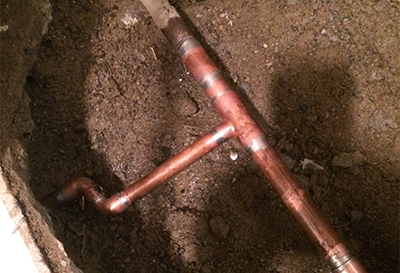How to Find and Repair Work Water Leaks-- A Comprehensive Guide
How to Find and Repair Work Water Leaks-- A Comprehensive Guide
Blog Article
We have stumbled on this great article pertaining to Finding hidden leaks listed below on the web and felt it made sense to write about it with you on this site.

Early discovery of dripping water lines can alleviate a prospective disaster. Some small water leakages may not be visible.
1. Check Out the Water Meter
Every house has a water meter. Checking it is a guaranteed manner in which assists you uncover leakages. For beginners, shut off all the water sources. Guarantee no person will certainly flush, make use of the faucet, shower, run the washing equipment or dishwasher. From there, most likely to the meter and also watch if it will certainly transform. Considering that no one is using it, there ought to be no motions. If it moves, that suggests a fast-moving leak. If you detect no changes, wait a hr or 2 and also examine back once more. This implies you might have a sluggish leakage that could even be below ground.
2. Check Water Intake
Examine your water bills and also track your water usage. As the one paying it, you need to discover if there are any inconsistencies. If you spot sudden changes, in spite of your usage coinciding, it means that you have leakages in your plumbing system. Remember, your water costs must fall under the same variety every month. An unexpected spike in your expense suggests a fast-moving leakage.
A steady rise every month, even with the very same behaviors, reveals you have a slow-moving leak that's likewise slowly escalating. Call a plumber to thoroughly check your residential property, particularly if you feel a warm area on your flooring with piping underneath.
3. Do a Food Coloring Test
When it concerns water consumption, 30% comes from bathrooms. Examination to see if they are running effectively. Decrease flecks of food shade in the tank and wait 10 mins. If the shade somehow infiltrates your dish throughout that time without flushing, there's a leakage in between the storage tank as well as bowl.
4. Asses Outside Lines
Don't neglect to inspect your outside water lines as well. Test faucets by connecting a garden hose pipe. Ought to water seep out of the link, you have a loose rubber gasket. Change this and make sure all links are tight. It will certainly aid get it properly analyzed as well as kept each year if you've got a lawn sprinkler system. One little leak can squander lots of water and spike your water bill.
5. Check and also Analyze the Situation
House owners need to make it a behavior to inspect under the sink counters and even inside cabinets for any bad odor or mold growth. These two warnings indicate a leakage so prompt focus is required. Doing regular assessments, also bi-annually, can save you from a major issue.
Inspect for discolorations as well as damaging as a lot of pipelines and also devices have a life expectations. If you believe leaking water lines in your plumbing system, don't wait for it to rise.
Early discovery of leaking water lines can alleviate a potential calamity. Some small water leakages might not be noticeable. Checking it is a surefire method that assists you discover leaks. One little leakage can lose loads of water and surge your water costs.
If you think leaking water lines in your plumbing system, do not wait for it to rise.
WARNING SIGNS OF WATER LEAKAGE BEHIND THE WALL
PERSISTENT MUSTY ODORS
As water slowly drips from a leaky pipe inside the wall, flooring and sheetrock stay damp and develop an odor similar to wet cardboard. It generates a musty smell that can help you find hidden leaks.
MOLD IN UNUSUAL AREAS
Mold usually grows in wet areas like kitchens, baths and laundry rooms. If you spot the stuff on walls or baseboards in other rooms of the house, it’s a good indicator of undetected water leaks.
STAINS THAT GROW
When mold thrives around a leaky pipe, it sometimes takes hold on the inside surface of the affected wall. A growing stain on otherwise clean sheetrock is often your sign of a hidden plumbing problem.
PEELING OR BUBBLING WALLPAPER / PAINT
This clue is easy to miss in rooms that don’t get much use. When you see wallpaper separating along seams or paint bubbling or flaking off the wall, blame sheetrock that stays wet because of an undetected leak.
BUCKLED CEILINGS AND STAINED FLOORS
If ceilings or floors in bathrooms, kitchens or laundry areas develop structural problems, don’t rule out constant damp inside the walls. Wet sheetrock can affect adjacent framing, flooring and ceilings.
https://www.servicemasterbyzaba.com/blog/how-to-detect-water-leakage-in-walls/

Do you enjoy more info about Locating water leaks? Place feedback below. We'd be delighted to hear your ideas about this article. In hopes that you come back again in the future. Liked our piece? Please share it. Help someone else check it out. Many thanks for your time. Come back soon.
Report this page